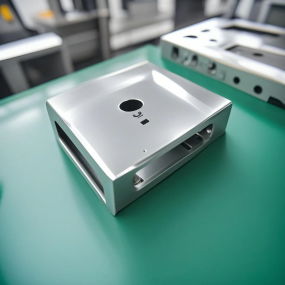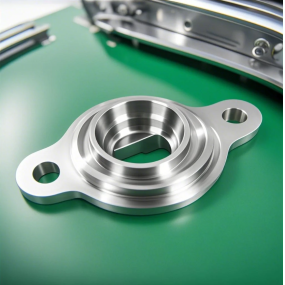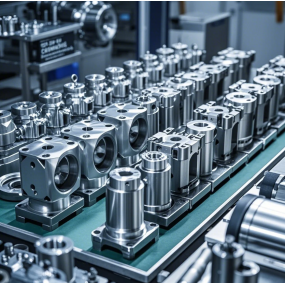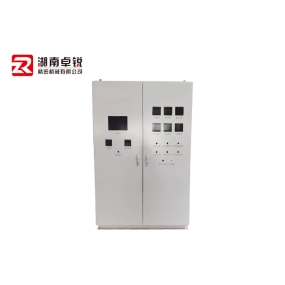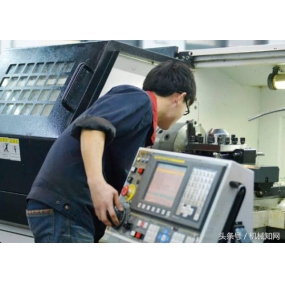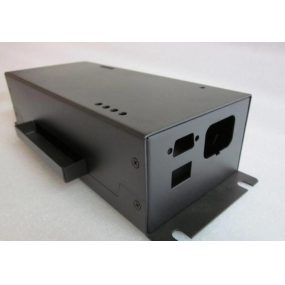Stamping technology is a processing method that applies external force to the blank through a mold to produce plastic deformation or separation, thereby obtaining a certain size, shape, and performance of the workpiece. The application range of stamping technology is very wide, which can process metal sheets, bars, and various non-metallic materials. Below, Yida Borun Petrochemical will briefly introduce the technical requirements for Metal Stamping process:
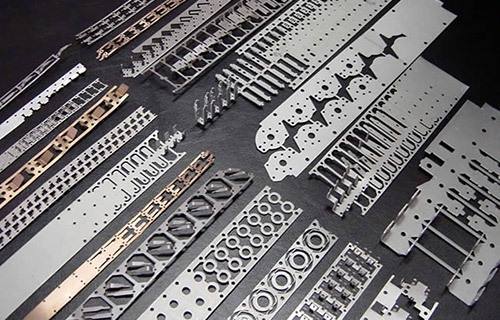
1、 What are the characteristics of stamping process
(1) The cold stamping method can be used to obtain workpieces with complex shapes that are difficult to process using other processing methods, such as thin shell parts. The dimensional accuracy of cold stamping parts is guaranteed by the mold, so the dimensional stability and interchangeability are good.
(2) High material utilization rate, lightweight workpiece, good rigidity, high strength, and low energy consumption during stamping process. Therefore, the cost of the workpiece is relatively low.
(3) Easy to operate, low labor intensity, easy to achieve mechanization and automation, high productivity.
(4) The mold structure used in stamping processing is generally complex, with a long production cycle and high cost.
2、 Basic requirements for stamping materials
The materials used for stamping should not only meet the technical requirements of product design, but also meet the requirements of stamping process and post stamping processing.
(1) Requirements for stamping forming performance: In order to facilitate stamping deformation and improve the quality of the parts, the material should have good plasticity, low yield strength ratio, large plate thickness directional coefficient, small plate plane directional coefficient, and a small ratio of yield strength to elastic modulus. For the separation process, it is not necessary for the material to have good plasticity. Materials with better plasticity are less likely to separate.
(2) Requirements for material thickness tolerance: The thickness tolerance of the material should comply with national standards. Because a certain gap between molds is suitable for materials with a certain thickness, the thickness tolerance is too large, which not only directly affects the quality of the parts, but may also lead to damage to the molds and punch presses.
3、 Selection of Precision Stamping Oil
Stamping oil plays a crucial role in the stamping process, and its excellent cooling performance and extreme pressure anti-wear performance have led to a qualitative leap in the service life of molds and the improvement of workpiece accuracy. The emphasis on the performance of stamping oil varies depending on the material of the workpiece.
(1) Silicon steel plate is a material that is relatively easy to punch and cut. Generally, in order to ensure the ease of cleaning of the finished workpiece, low viscosity stamping oil is used on the premise of preventing the generation of punching burrs.
(2) When selecting stamping oil for carbon steel plates, the first thing to pay attention to is the viscosity of the stretching oil. Determine the optimal viscosity based on the difficulty of processing, the method of applying stretching oil, and the degreasing conditions.
(3) Galvanized steel plates may undergo chemical reactions with chlorine based additives, so when selecting stamping oil, attention should be paid to the possibility of white rust caused by chlorine based stamping oil. However, using Yidabo Run sulfur based stamping oil can avoid rust problems, but it should be degreased as soon as possible after stamping processing.
(4) Stainless steel is a material that is prone to work hardening, requiring the use of tensile oil with high oil film strength and good sintering resistance. Generally, stamping oil containing sulfur chlorine composite additives is used to ensure extreme pressure processing performance while avoiding problems such as burrs and fractures on the workpiece.
4、 The main content and steps of developing stamping processing technology
(1) Determine the type of blank. The type of blank should be determined based on the material, shape, and size of the parts, as well as the number of workpieces to be placed.
(2) Determine the machining sequence of the parts. The processing sequence of parts should be determined based on all technical requirements such as dimensional accuracy, surface roughness, and heat treatment, as well as the type, structure, and size of the blank.
(3) Determine the process method and machining allowance. Determine the machine tools, workpiece clamping methods, machining methods, measurement methods, and machining dimensions used in each process.
5、 Basic principles for developing part processing technology
(1) The principle of prioritizing the fine basal plane. The machining of parts must select a suitable surface as the positioning base on the machine tool or fixture. The rough surface, which serves as the first process positioning base, is called the rough surface; The surface that has been processed and used as a positioning base is called a precision base. The main base surface should be processed first.
(2) Principle of separating coarse and fine. For surfaces with high precision requirements, precision machining should generally be carried out after all rough machining of the workpiece. This can eliminate the deformation of the workpiece caused by clamping force, cutting heat, and internal stress during rough machining, and is also beneficial for the arrangement of heat treatment processes; In mass production, rough and fine machining are often carried out on different machine tools, which is also conducive to the rational use of high-precision machine tools.
(3) The principle of 'one-time clamping'. In single piece and small batch production, surfaces with positional accuracy requirements should be precision machined in one clamping as much as possible.

The above are the technical requirements for stamping processing technology. Reasonable selection of molds, workpiece raw materials, and stamping oil is the key to improving workpiece quality. Yida Borun is the largest high-end metal processing oil production base in China. Its independently developed stamping oil products have excellent extreme pressure and anti-wear performance, which can effectively protect molds and extend the service life of equipment. It is the designated partner of many large and medium-sized machine tool equipment manufacturers in China and has been widely recognized and praised by domestic and foreign customers.


 Spanish
Spanish Arabic
Arabic French
French Portuguese
Portuguese Belarusian
Belarusian Japanese
Japanese Russian
Russian Malay
Malay Icelandic
Icelandic Bulgarian
Bulgarian Azerbaijani
Azerbaijani Estonian
Estonian Irish
Irish Polish
Polish Persian
Persian Boolean
Boolean Danish
Danish German
German Filipino
Filipino Finnish
Finnish Korean
Korean Dutch
Dutch Galician
Galician Catalan
Catalan Czech
Czech Croatian
Croatian Latin
Latin Latvian
Latvian Romanian
Romanian Maltese
Maltese Macedonian
Macedonian Norwegian
Norwegian Swedish
Swedish Serbian
Serbian Slovak
Slovak Slovenian
Slovenian Swahili
Swahili Thai
Thai Turkish
Turkish Welsh
Welsh Urdu
Urdu Ukrainian
Ukrainian Greek
Greek Hungarian
Hungarian Italian
Italian Yiddish
Yiddish Indonesian
Indonesian Vietnamese
Vietnamese Haitian Creole
Haitian Creole Spanish Basque
Spanish Basque


